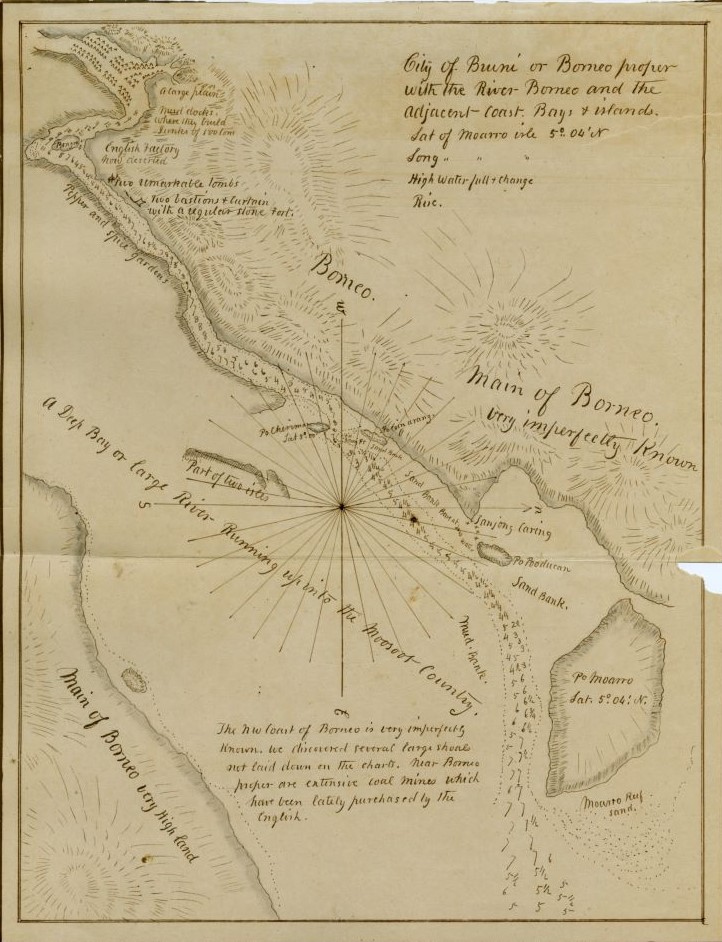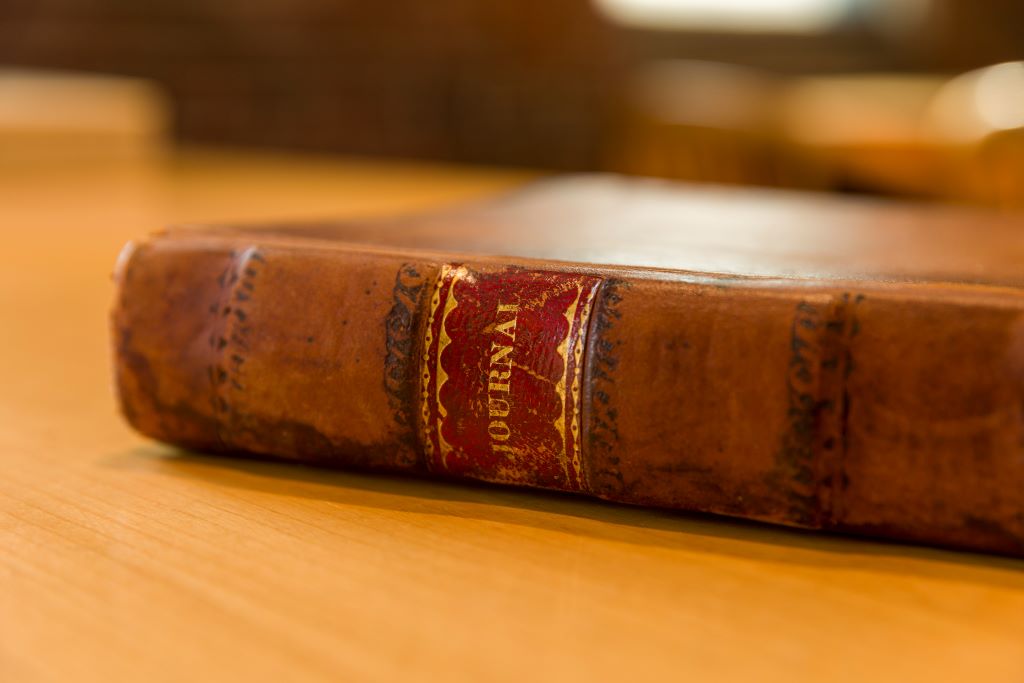Like all midshipmen on USS Constitution, Washington Perry Buckner kept a journal during his two-year voyage around the world on the ship in the 1840s. A standard of training in the early U.S. Navy, the midshipman’s journal taught the future officers how to keep an accurate ship’s logbook. As a result, many midshipmen’s journals are nothing more than identical duplicates of the ship’s log. The students often simply copied the dry recitations of ship’s hourly course and speed, weather observations, and ship conditions from each other or directly from the official logbook.
Buckner was not one of them. A prolific writer, artist, and cartographer, Buckner crafted detailed descriptions of the places he visited in his journal, along with nautical charts of new harbors and coastlines the ship visited and sketches of the sights he saw ashore.
In addition to his journal, Buckner wrote frequent letters to his sister Priscilla Reardon in Little Rock, Arkansas, detailing in more personal tones his experiences of the voyage. Priscilla kept her brother’s letters and passed them down to her daughter. In the 1890s, long after Buckner’s death, the Arkansas Democrat newspaper published the letters and excerpts from his log in a series of articles called, Tales of the Sea. A bound scrapbook of the Tales of the Sea articles, as well as Buckner’s journal, are in the collections of the USS Constitution Museum. These rich documents provide an insight into USS Constitution’s circumnavigation of the globe between 1844 and 1846 from the perspective of a young man seeing the world for the first time.

Buckner spent his first two years in the Navy on the sloop Marion assigned to squadron duty in the Caribbean, before joining Constitution for its circumnavigation. His journals and letters during his tour on Constitution give us a perspective of a young man travelling as far as he possibly could go from his home. While he diligently described everything he encountered, he appears to have had little patience for many of the new cultures he encountered or the routine discomforts of life at sea.
After departing Sumatra to sail to Singapore in January 1845, Buckner wrote to his sister that the voyage “ought to be called the ‘dirty shirt’ cruise, for since leaving Rio we have not seen a single wash-woman, but [the officers and midshipmen] have been forced to wear salt water washed shirts, washed by the sailors and without starching or ironing.”
Buckner also frequently noted the monotony of the long ocean passages, which he and his fellow midshipmen sought to break up with any entertainment they could find or create. At one point early in the voyage, they began debating a hypothetical physics question amongst themselves that imagined the ship travelling at 50 miles an hour and shooting a gun directly astern whose cannonball was travelling at the same speed. Assuming the ball was unaffected by gravity, how far apart would the ship and the ball be after an hour, they wondered.
Suffolk University history professor Robert Allison recently unearthed Buckner’s challenge while conducting research on Constitution‘s World Cruise. Intrigued by the question, he joined forces with Suffolk University physics professor Walter Johnson to verify which midshipmen had produced the right answer and why it was correct. To learn who was correct and why, you can read Allison’s and Johnson’s explanation of the debate and its solution as a downloadable publication available on the USS Constitution Museum website.
In 1850, Buckner legally changed his first name from Washington to William. Buckner’s propensity for mathematics and physics eventually earned him a position as a gunnery instructor at the United States Naval Academy. In 1861, he published a new book of tables and formulae for determining gun ranges that could easily be used by officers at sea.
Buckner retired from the Navy at the rank of commander following the end of the American Civil War. He died in 1869 in the Brooklyn Navy Yard hospital in New York at age 46.
The Author(s)
Carl Herzog
Public Historian, USS Constitution Museum
Carl Herzog is the Public Historian at the USS Constitution Museum.
